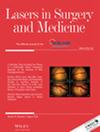A Protocol for Dermatology Service Learning for Medical Students: Supporting Laser Tattoo Removal for Adults Impacted by the Justice-System
Abstract
Objective
Medical students are interested in participating in dermatology-based service learning programs that address social justice issues. This article describes a novel volunteer program in dermatology with a focus on laser medicine.
Methods
We developed a service-learning program that is embedded in a tattoo removal program that serves adults who have interacted with the criminal justice system. The program is designed to ensure that student participation is appropriate to their training while allowing volunteers to: (1) gain exposure to dermatological clinical settings, (2) strengthen communication skills with diverse patients that medical students typically do not typically interact with during their first and second years, (3) build relationships with dermatology residents and faculty and work in multi-disciplinary teams, (4) observe laser procedure and physicians' approaches to the bedside manner, and (5) support the clinical team with patient education postprocedure. Lastly, the program is designed to facilitate peer mentorship by encouraging second-year students to transition into a leadership role and co-mentor first-year students. Evaluation survey data of the first two student cohorts (n = 6 students, 75% response rate) were collected in January, 2025 and results are summarized.
Results
Student volunteers participate in the following activities: consent form preparation, patient check-in, rooming, consent form collection, shadow procedure, assist with postprocedure tasks (e.g., apply skin ointment and provide sun protection supplies) and patient education as needed. The program is in its second year and has been piloted with eight students with the number of sessions attended ranging between 1 and 13. Evaluation data indicate that all students had prior work experience in clinical settings. Motivations for working in the clinic primarily included interest in providing medical services to adults impacted by the justice system (100%) followed by interest in gaining experience in dermatology to potentially support a career in this discipline. Students felt the program would prepare them to serve underserved communities and for a career in dermatology (33% for each). All students reported being very satisfied with the program's training activities and the majority were able to partake in most activities. Most students reported being confident or very confident in their abilities to carry-out the activities assigned to volunteers and build relationships with students and clinicians. Areas for program improvement include streamlined onboarding of new students.
Conclusions
This medical student service-learning program has been received favorably by the clinical team and enthusiastically by medical students. Preliminary evaluation data suggest that the protocol described here is working as intended and helping to support students' personal and professional goals.

 求助内容:
求助内容: 应助结果提醒方式:
应助结果提醒方式:


